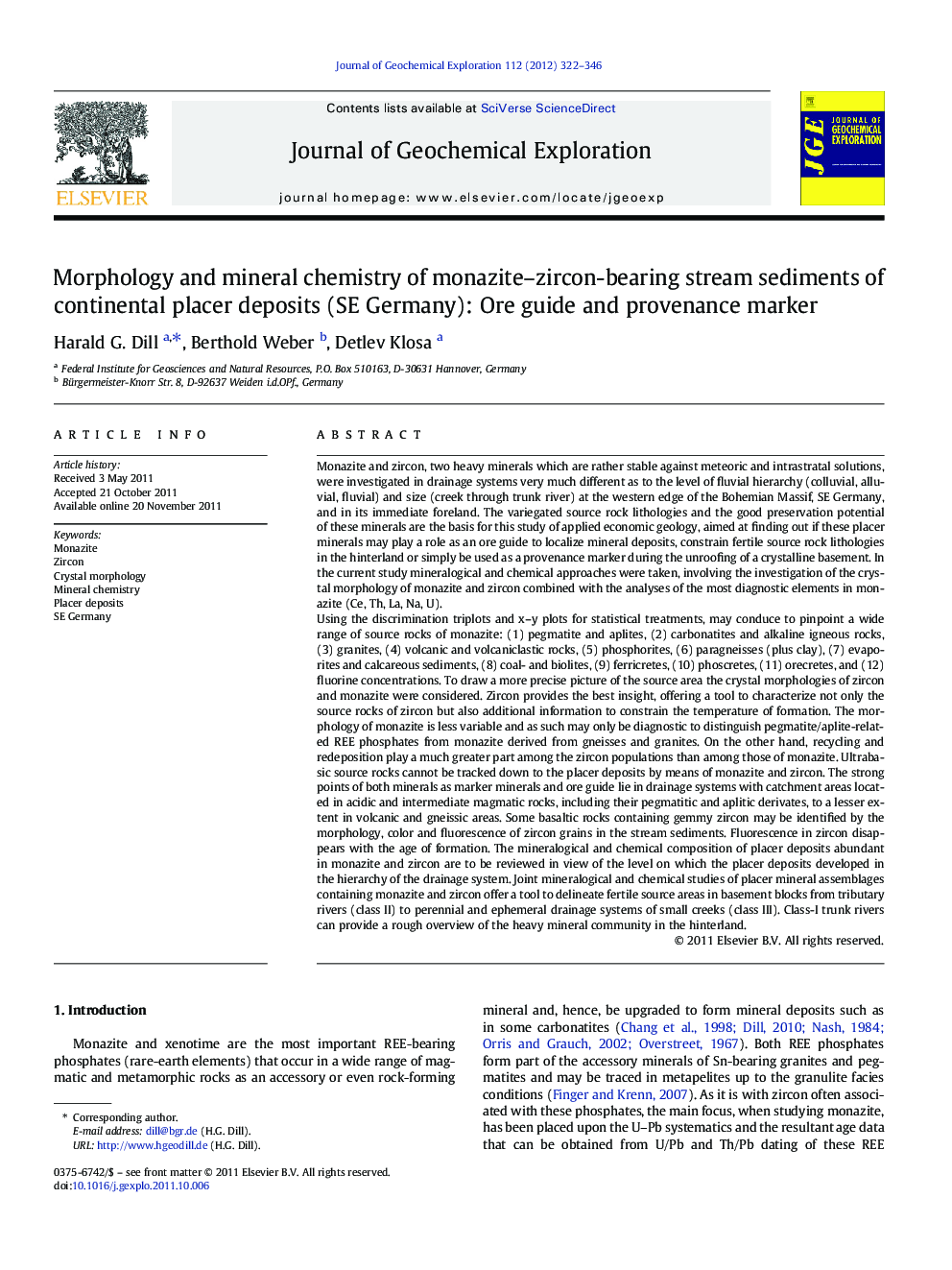| کد مقاله | کد نشریه | سال انتشار | مقاله انگلیسی | نسخه تمام متن |
|---|---|---|---|---|
| 4457776 | 1620942 | 2012 | 25 صفحه PDF | دانلود رایگان |

Monazite and zircon, two heavy minerals which are rather stable against meteoric and intrastratal solutions, were investigated in drainage systems very much different as to the level of fluvial hierarchy (colluvial, alluvial, fluvial) and size (creek through trunk river) at the western edge of the Bohemian Massif, SE Germany, and in its immediate foreland. The variegated source rock lithologies and the good preservation potential of these minerals are the basis for this study of applied economic geology, aimed at finding out if these placer minerals may play a role as an ore guide to localize mineral deposits, constrain fertile source rock lithologies in the hinterland or simply be used as a provenance marker during the unroofing of a crystalline basement. In the current study mineralogical and chemical approaches were taken, involving the investigation of the crystal morphology of monazite and zircon combined with the analyses of the most diagnostic elements in monazite (Ce, Th, La, Na, U).Using the discrimination triplots and x–y plots for statistical treatments, may conduce to pinpoint a wide range of source rocks of monazite: (1) pegmatite and aplites, (2) carbonatites and alkaline igneous rocks, (3) granites, (4) volcanic and volcaniclastic rocks, (5) phosphorites, (6) paragneisses (plus clay), (7) evaporites and calcareous sediments, (8) coal- and biolites, (9) ferricretes, (10) phoscretes, (11) orecretes, and (12) fluorine concentrations. To draw a more precise picture of the source area the crystal morphologies of zircon and monazite were considered. Zircon provides the best insight, offering a tool to characterize not only the source rocks of zircon but also additional information to constrain the temperature of formation. The morphology of monazite is less variable and as such may only be diagnostic to distinguish pegmatite/aplite-related REE phosphates from monazite derived from gneisses and granites. On the other hand, recycling and redeposition play a much greater part among the zircon populations than among those of monazite. Ultrabasic source rocks cannot be tracked down to the placer deposits by means of monazite and zircon. The strong points of both minerals as marker minerals and ore guide lie in drainage systems with catchment areas located in acidic and intermediate magmatic rocks, including their pegmatitic and aplitic derivates, to a lesser extent in volcanic and gneissic areas. Some basaltic rocks containing gemmy zircon may be identified by the morphology, color and fluorescence of zircon grains in the stream sediments. Fluorescence in zircon disappears with the age of formation. The mineralogical and chemical composition of placer deposits abundant in monazite and zircon are to be reviewed in view of the level on which the placer deposits developed in the hierarchy of the drainage system. Joint mineralogical and chemical studies of placer mineral assemblages containing monazite and zircon offer a tool to delineate fertile source areas in basement blocks from tributary rivers (class II) to perennial and ephemeral drainage systems of small creeks (class III). Class-I trunk rivers can provide a rough overview of the heavy mineral community in the hinterland.
► Zircon morphology can be used as provenance marker and ore guide.
► U, Th, Nd, Ce and La were used as provenance marker and ore guide.
► These markers work at their best for magmatic source rocks.
► Fluorescence and morphology of zircon point to gemstone-bearing alkaline basalts.
► Monazite and zircon may be applied in drainage systems of higher level.
Journal: Journal of Geochemical Exploration - Volume 112, January 2012, Pages 322–346